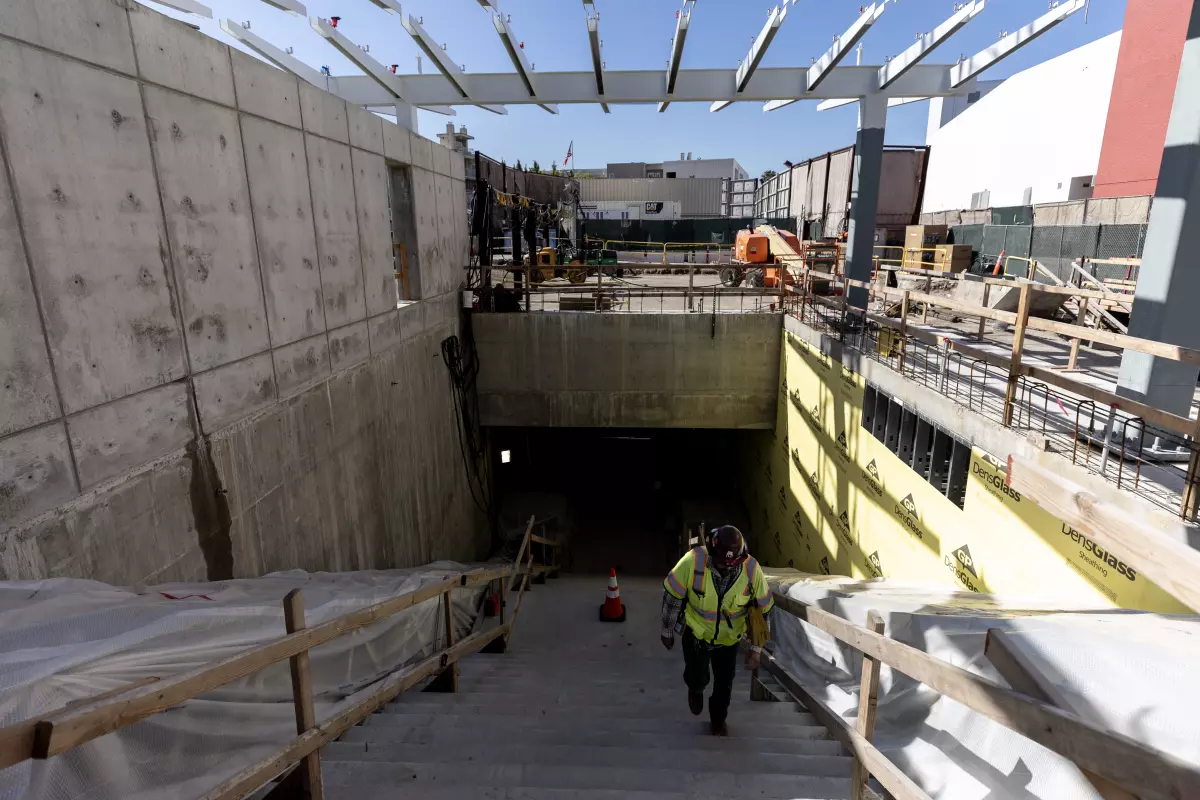L.A. Metro’s D Line hits a milestone: Tunneling is complete for expansion to the Westside
 A construction worker at the future Wilshire/Fairfax stop on Monday as L.A. Metro celebrated completion of tunneling for the subway’s D Line extension into the Westside. (Etienne Laurent / For the Times)
A construction worker at the future Wilshire/Fairfax stop on Monday as L.A. Metro celebrated completion of tunneling for the subway’s D Line extension into the Westside. (Etienne Laurent / For the Times)
Caroline Petrow-Cohen
Los Angeles Times
April 2, 2024
After five years of construction and numerous delays, crews have finished tunneling operations for the 9-mile westward expansion of the Metro D Line, which will stretch from the current terminus in Koreatown to a new Westwood/VA Hospital Station.
The expansion project will add seven Metro stations and a high-speed connection from downtown Los Angeles to the Westside, according to L.A. Metro’s website. Construction of the $9.5-billion project began in 2019.
“As one of L.A.’s busiest areas, the Westside is the region’s second-largest job center,” Metro says on its website. “We are closer than ever to connecting busy areas and improving travel for everyone who lives, works and plays in L.A. County.”
The extension of the D Line, also known as the Purple Line, is taking place in three phases in sections that are roughly 3 miles long each.
Section 1, which will include the Wilshire/La Brea Station, Wilshire/Fairfax Station and Wilshire/La Cienega Station, is slated to open first, in 2025.
Section 2, consisting of the Wilshire/Rodeo Station and Century City/Constellation Station, is set to open in 2026. Section 3 is expected to be completed in 2027, with Westwood/UCLA and Westwood/VA Hospital stations.
. . . .



